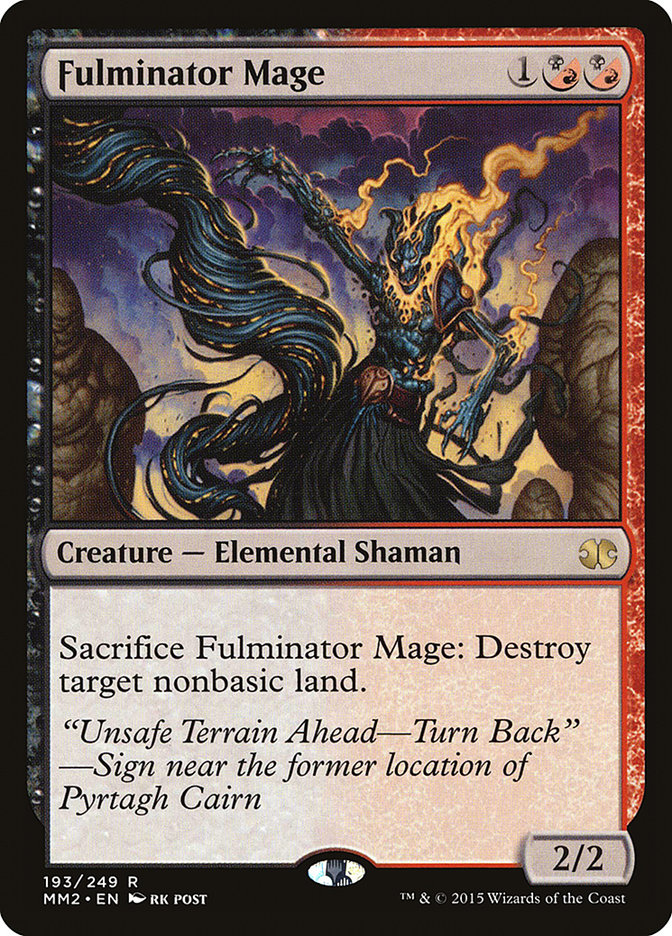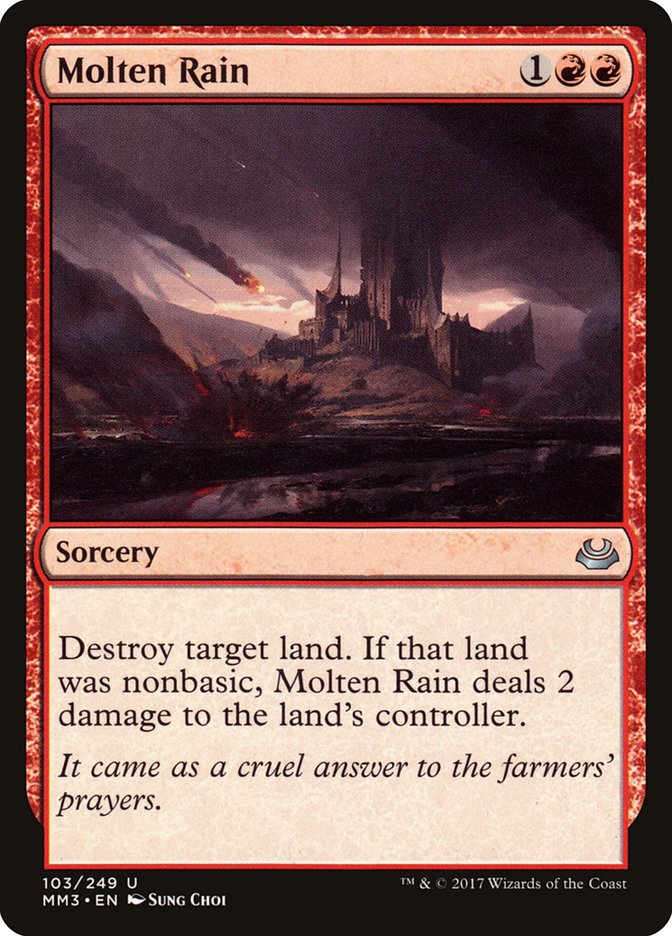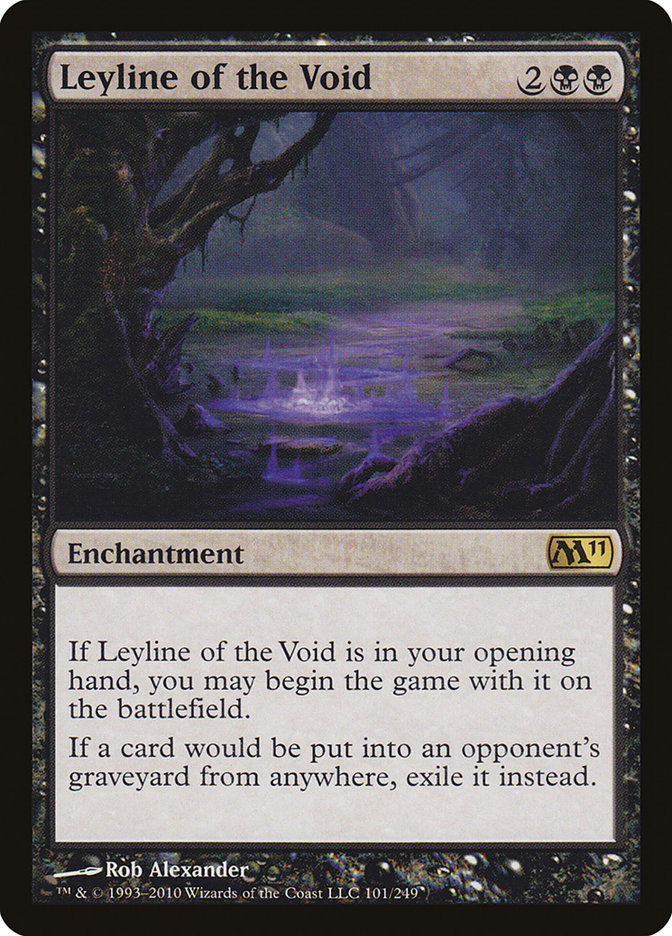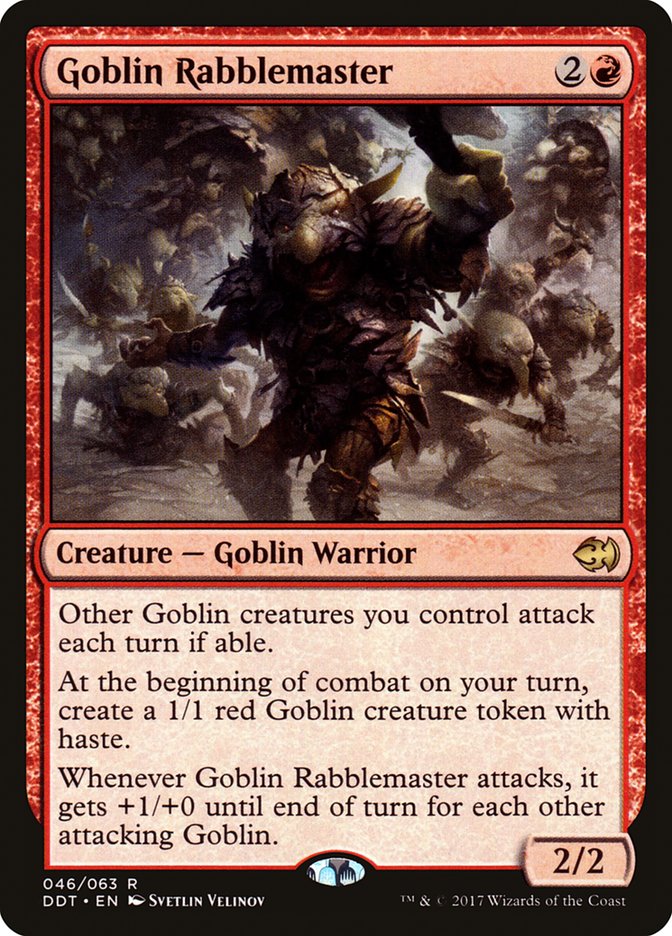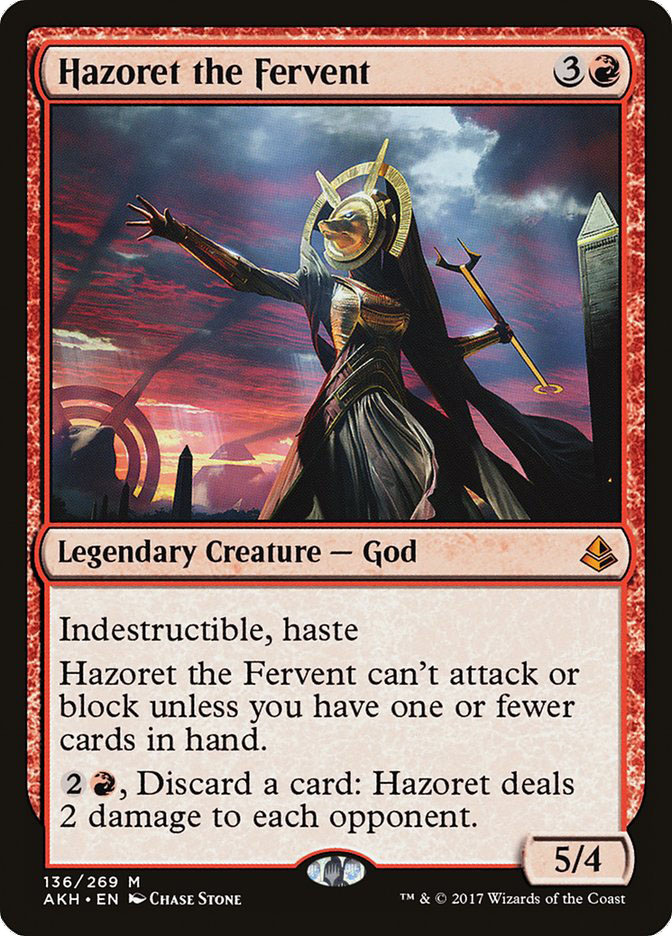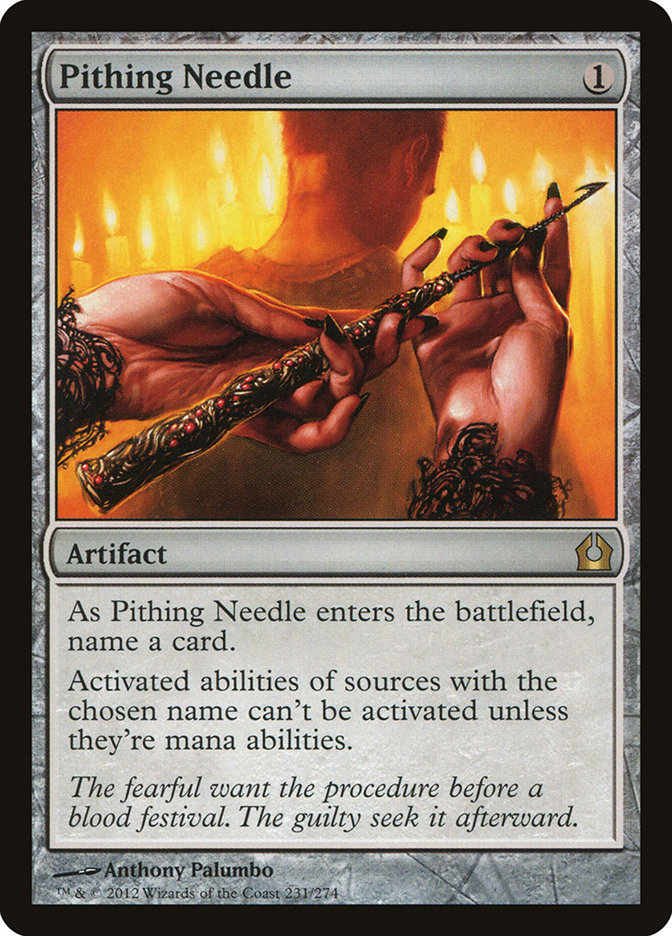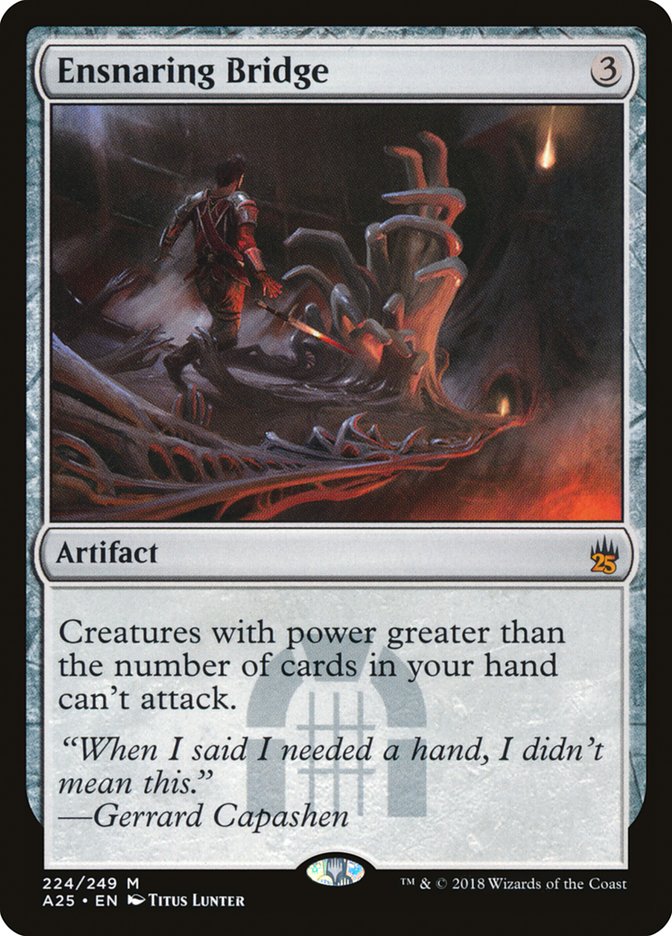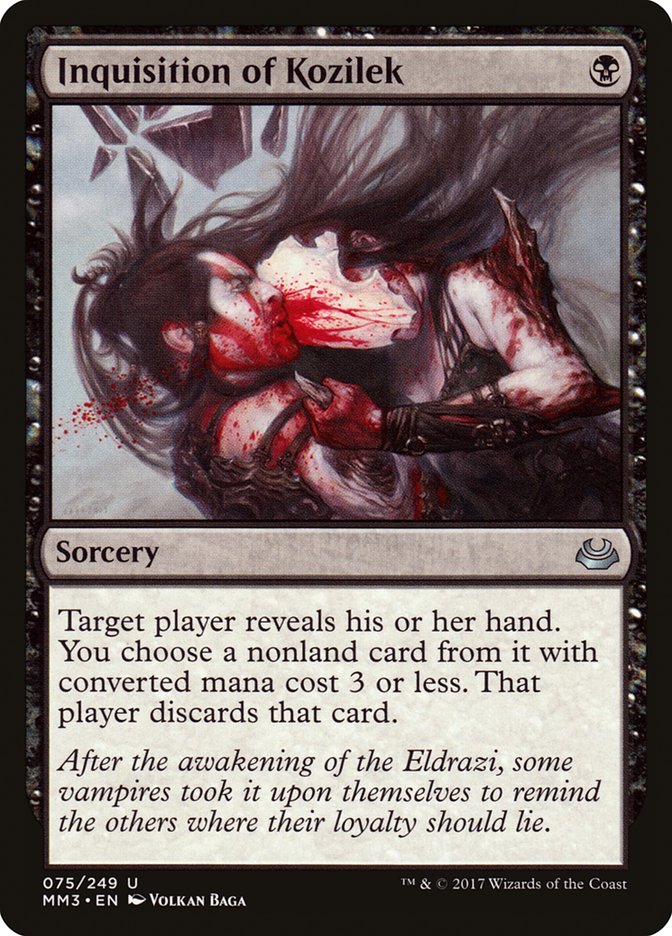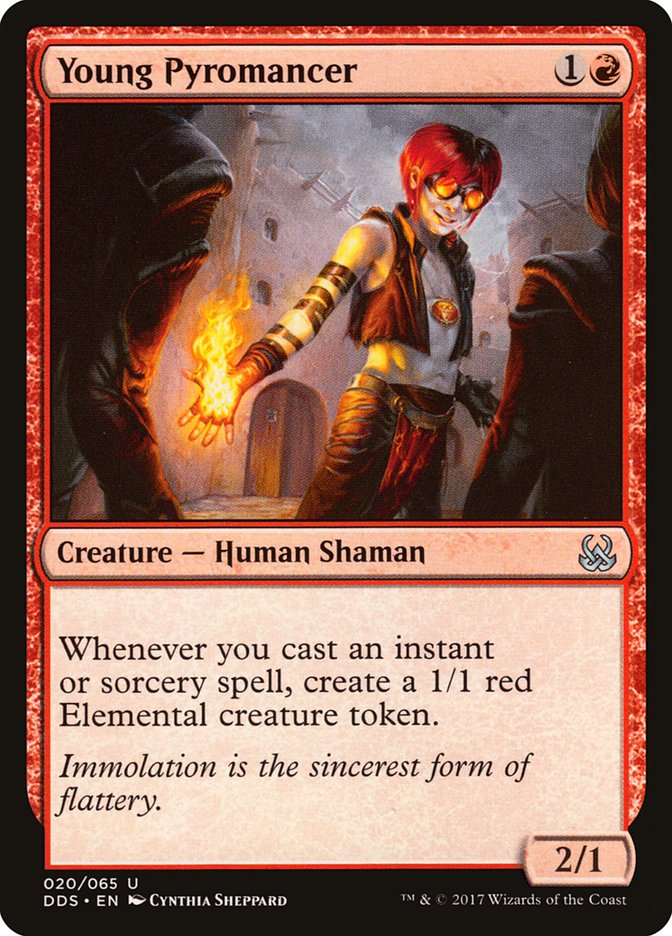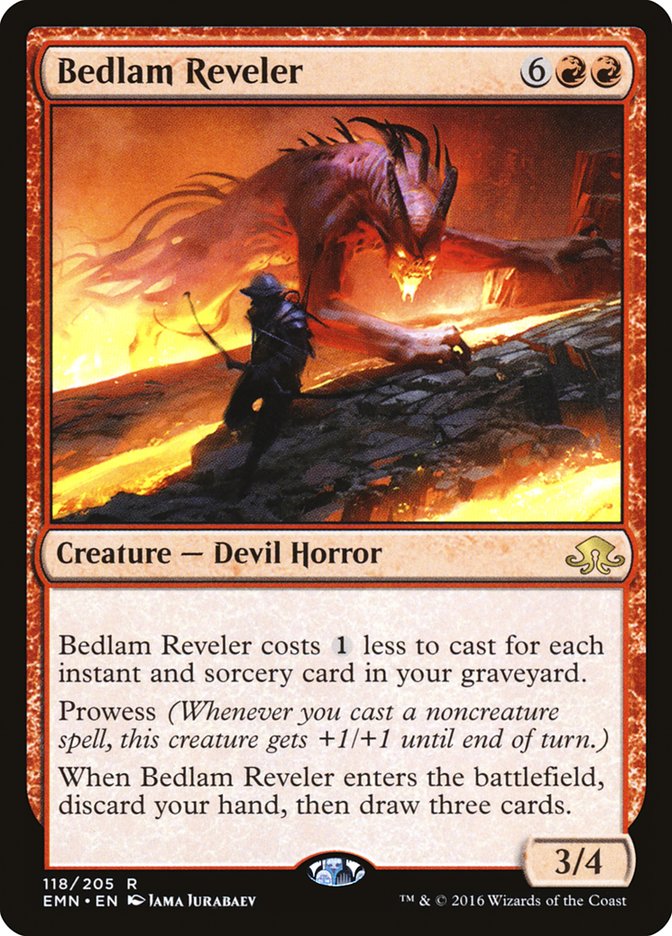After getting two different camera matches at
#SCGPhilly
playing Mardu Pyromancer, my various social media inboxes have been
exploding with questions about the deck. Even after deciding to write the
article, the questions didn’t stop:
Tomorrow I’m going to be writing an article on Mardu
Pyroman at @StarCityGames.
I’m currently feeling out the best structure for it, and want to
feel things out a bit.So, what do you want to know
about the deck? What do you think is important to include in an article
about it?— Emma Handy (@Em_TeeGee) July
23, 2018
Rather than giving the basic rundown of how the deck tends to operate,
like I did last week
, it seemed more fitting to give a more detailed breakdown of what goes
into the deck and playing it, in that order.
Building the Deck
Mardu Pyromancer’s numbers are fairly tight at this point, but here’s the
core of the deck:
Creatures (8)
Lands (13)
Spells (30)

Add: 4 fetchlands, 1 removal spell, 1 other land, 1 three-drop.
Most of what’s going on here is fairly intuitive, with notes being:
-
The fetchlands need to be Arid Mesa or Marsh Flats to grab the
proper basics and shocklands. I recommend Marsh Flats, as it can
grab basic Swamp. -
The second two-mana removal spell waffles between Terminate and
Dreadbore. -
The final land is generally going to take the form of another
Sacred Foundry, another basic Mountain, or a fetchland. -
The final three-drop in the deck has the goal of being some sort of
bomb and is most commonly a Liliana of the Veil or a Liliana, the
Last Hope.
The sideboard isn’t quite as formulaic, and I’ll use my deck from last
weekend’s tournament as a bit of framework:
Creatures (8)
Planeswalkers (1)
Lands (20)
Spells (31)

Getting the easy stuff out of the way, here’s what is standard in the list:


All of this is fairly stock and has been talked about in other places. The
real decisions come in other places.
With a deck like Mardu Pyromancer, it’s worth noting that there’s never
going to be a perfect build of the deck. There may come a point at which
the maindeck is streamlined in the same way that Grixis Delver was in
Legacy before Deathrite’s banning with every single list being within a
single card of each other, but in a format as diverse as Modern, it’s going
to be better to build things a certain way from week to week.
Looking at my list, almost all the decisions made during the deckbuilding
process were made around two cards: Liliana, the Last Hope and Leyline of
the Void.
Many versions of Mardu Pyromancer have been playing Liliana of the Veil as
their maindeck three-drop of choice, and it didn’t make a ton of sense to
me. With Humans, Collected Company decks, the mirror, and Infect showing up
in the numbers they were, Liliana, the Last Hope seemed like a slam dunk in
the list.
Against Mardu Pyromancer in particular, Liliana, the Last Hope is a
nightmare, where Liliana of the Veil tends to be fairly shaky.
Between Lingering Souls and Young Pyromancer, leveraging concrete advantage
with Modern’s priciest Planeswalker is a pain, and the lack of good targets
for the burn in the deck makes it difficult to run away with the game and
activate her ultimate.
When posturing a deck to be better against a certain field of cards,
hedging is reasonable, but there comes a point at which one can’t prepare
for everything, so rather than trying to cover all our bases by splitting
the flavors of Liliana between the maindeck and sideboard, it made more
sense to just go in on the version we were main decking.
In lists without as many copies of Liliana, the Last Hope, Molten Rain does
have its benefits. Between triggering Young Pyromancer, making Bedlam
Reveler easier to cast, and being able to knock decks off their one basic,
Fulminator Mage isn’t a strict upgrade over the sorcery.
On the other side of things, with Liliana, the Last Hope and Kolaghan’s
Command to rebuy Fulminator Mage, the deck has access to a very real
Ponza-esque strategy. On top of that, there’s the whole “Fulminator Mage
has power and toughness” for games that involve an opponent with a ton of
lands on their side of the table.
With five ways to recur creatures in the list, playing Fulminator Mage was
fairly academic.
Mardu Pyromancer decks tend to have between two and five pieces of
graveyard hate in their sideboards, with the most common pieces being
Surgical Extraction and Nihil Spellbomb, which both make sense.
Surgical Extraction can be a way to trigger Young Pyromancer for free, a
pseudo-Lotus Petal for Bedlam Reveler, or shore up creature-free combo
matchups that Mardu Pyormancer otherwise can struggle against. Nihil
Spellbomb helps Mardu Pyromancer not have to sacrifice an entire card for
the sake of dealing with graveyard synergies.
Right now, I’m of the firm belief that Leyline of the Void is the best
graveyard hate for Mardu Pyromancer. The biggest reason for this lies in
the fact that the deck in the format that abuses its graveyard the most,
Ironworks, can easily fight through Nihil Spellbomb and Surgical
Extraction. Remember this tweet?
Yeah, x2 Surgical, Relic and Abrade wasn’t enough
🙁— Saffron Olive (@SaffronOlive) July
9, 2018
If fighting with a scalpel isn’t working, it’s time to bring out the
sledgehammer. Leyline of the Void also has splash applications in other
matchups that aren’t necessarily as intuitive,
like the mirror
.
At the risk of using the “pitches to
Force
” platitude, Mardu Pyromancer also has something to do with extra copies of
Leylines that it draws later in the game: turn them into real cards via
Faithless Looting.
These aren’t the only cards that find their way into Mardu Pyromancer
lists, but it’s all incredibly contextual and dependent on the expected
metagame of the event. To fire off a few more cards that find their way
into lists:
Generally sideboarded for matchups where an incredibly punishing clock is
necessary. Think combo and Tron.
Good against fair decks where an indestructible clock will eventually close
the game. Pitching cards to her ability isn’t always a liability either.
If the haymaker you’re looking for is something a little more grindy than
Hazoret, Chandra plays a similar role. Protecting her isn’t particularly
difficult in the deck with upwards of ten to fifteen removal spells.
Great answer for Planeswalkers and other pesky cards. Dreadbore fulfills a
similar role, but Pithing Needle can slip under Logic Knot and avoid being
Spell Snare’d.
Are lots of medium-to-large-sized creatures attacking? Ensnaring Bridge is
a great answer. Especially because Young Pyromancer and Lingering Souls are
great at producing attackers that can sneak under a ‘Bridge.
Seeing Blood Moon, Ensnaring Bridge, Leyline of the Void, and Kambal,
Consul of Allocation is a ton of hate in a deck that isn’t classified as a
prison deck, but we’ll put a button in that for a minute.
Play Patterns
Playing Mardu Pyromancer is much harder that it tends to look. There are
obviously the easy curves of Thoughtseize into Young Pyromancer into Blood
Moon and so on, but even the “free” games tend to have a ton of decisions
in them. People aren’t cold to Blood Moon like they used to be, and
redundancy is the name of the game in the Modern landscape of today.
Faithless Looting is Brainstorm
, and is similarly difficult to play in this archetype. The single biggest
mistake I see players make is leading on them too early when the matchup
doesn’t call for it.
Other than Bedlam Reveler, Mardu Pyromancer doesn’t have a ton of ways to
accrue a ton of cards. This means that Mardu Pyromancer is generally trying
to make its spells line up with the opponent’s as best as possible. The
difficulty of this in the context of the matchup is going to dictate how
you should be playing Faithless Looting.
In fairer matchups where trading cards is going to happen throughout the
game and the power levels of all cards are relatively similar, it’s going
to be better to try and sandbag copies of Faithless Looting. Ryan Overturf
had an entire
article on holding cantrips
a few years ago, but to summarize: the longer the game goes, the more
information Faithless Looting’s caster has at their disposal to inform the
decisions associated with resolving the spell.
On top of that, in fair matchups, it’s generally going to be better to try
and discard Flashback spells during the earlier game to increase the number
of options available to you on any given turn and avoid the card
disadvantage that comes from the front half of Faithless Looting in fair
matchups. On a related note: don’t fall into the trap of always discarding
spells that can be cast from the graveyard just because they have
Flashback. Sometimes the front half of a Lingering Souls is going to be
better more impactful than other cards in the deck.
On the other side of the spectrum, some matchups are decided almost
entirely by hate cards being drawn or not. These matchups, it doesn’t
matter that the initial casting of Faithless Looting is going to put the
Pyromancer pilot down a card. All that matters is churning through the
library in hopes of finding Blood Moon and company.
Knowing how to cast hand disruption is one of the key elements to piloting
Mardu Pyromancer at peak proficiency. Reid Duke has a
fantastic article on the subject
. When applying it to Modern, the tl;dr comes down to a handful of truisms:
-
Is the opponent’s deck going to try and empty their hand quickly?
If so, trading an Inquisition for a card should be prioritized,
because having that opportunity isn’t a guarantee. -
Is the opponent a combo deck? Try to cast hand disruption early, as
it can feed information on what cards should be interacted with. -
Is this a matchup that involves a single card mattering from the
opponent? Try and hold the disruption until exactly the turn before
they would cast the card. This gives them the most opportunities to
draw the card, and they will operate under the information that
they already have it. For example, an Ironworks player isn’t going
to take a Krark-Clan Ironworks off of Ancient Stirrings if they
think the one in their hand is safe. -
In matchups with countermagic, Thoughtseize can be used to pave the
way for another spell resolving. -
In matchups where the battlefield is the only thing that matters,
try and turn hand disruption into real cards via Faithless Looting.
A turn 5 Inquisition of Kozilek is going to be worth less than a
random card against Tron, for example.
Bedlam Reveler and Young Pyromancer are not cards that win games quickly.
Modern is a format that tends to operate in the opposite direction. A
format that leans towards ending games in the first four-ish turns is going
to have swaths of decks that aren’t prepared to fight in the later turns of
the game. Bedlam Reveler and Young Pyromancer are cards that punish
opponents for allowing the game take a long time.
Mardu Pyromancer must have the ability to set up its own gameplan, interact
with what is on the battlefield, and interact with what is to come. Mardu
achieves this by creating a sort of premature lategame as quickly as
possible, using piles of one- and two-mana cards to whittle both players
down to as few resources as possible before using a Bedlam Reveler to shoot
back up to having more cards than the opponent. On top of the obvious
synergies at play with Bedlam Reveler and Young Pyromancer, this is why so
many cards in the deck cost so little mana.
As a result of being a fair deck that leans on its synergies that come
online in the mid-to-late game, most games that Mardu Pyromancer plays are
going to be played from behind. The way that the deck is interested in
playing its cards is like the thinking that goes into resolving Faithless
Looting. It’s all about role assessment.
In matchups that Mardu cannot go over the top of or are rooted in an axis
on which Mardu can’t compete (think Tron and Dredge), Mardu’s plan is to
try and disrupt what the opponent is doing, and then apply as much pressure
as possible. Jamming Young Pyromancer on the turn after discarding a
Cathartic Reunion with Inquisition of Kozilek, for example.
Other matchups, particularly creature-based ones, Mardu is very comfortable
taking its time, and using its resources to simply prolong the game by
exchanging resources; using Lingering Souls to double-, triple-, and
quadruple-block things, holding Kolaghan’s Commands to clean up little
creatures or saving Terminate for a lategame haymaker in the vein of
Restoration Angel from Humans.
Sideboarding
Sideboarding with the deck is fairly academic for anybody that has played
with a midrange deck before, but for anybody new to the archetype, there’s
a secret that comes from playtesting: If you find yourself discarding the
same cards to Faithless Looting in a matchup, that card probably shouldn’t
be in your deck. Obviously, there are going to be exceptions to the rule,
but ‘Looting-style effects force us to confront which cards we value higher
than other ones in real time.
Mardu lists being as metagame dependent as they are makes it fairly
nonsensical to list the typical “These cards out/These cards in”-styled
sideboard guide that most people expect, so instead of that, I’ll go
through matchups, talk about cards that are worth bringing in from
different variants, and what cards tend to be weaker. You’re an adult,
figure out the numbers yourself.
VS Ironworks
Strong cards:

Weak cards:

Generally speaking, this is a matchup that comes down to locking the
opponent out while pecking them to death. Pithing Needle doesn’t stop most
abilities in the deck, but it does hurt the lands and Ghirapur Aether Grid
is a beating if left unanswered, so the ‘Needle is worth bringing in. I’ve
been bringing in a copy of Fulminator Mage on the play, but it’s been too
slow on the draw. Dreadbore can be worth bringing back in if Karn, Scion of
Urza shows up, but that’s fairly uncommon.
VS Humans
Strong cards:

Weak cards:

I don’t have a ton to bring in in my list, as the matchup is already pretty
good for Mardu Pyromancer, and have only been cutting Manamorphose and
Thoughtseize as a result. Manamorphose is a liability due to Thalia,
Guardian of Thraben, and other than a couple of tech choices, Inquisition
hits all the same cards as Thoughtseize but without having to pay life.
Collective Brutality can be on the chopping block if you’re really trying
to fit more cards in your deck, but that’s a bit of a stretch. It kills
Meddling Mage, Kitesail Freebooter, and Thalia, Guardian of Thraben, so
what else are you really looking for?
Try to Flashback Lingering Souls whenever you have the opportunity, as
they’re the easiest thing for a Humans player to Meddling Mage and having
one hit by Dire Fleet Daredevil can be pretty brutal.
If you have the game mostly locked up and Aether Vial isn’t a problem,
Izzet Staticaster is likely the best thing to trap with Pithing Needle.
VS Mono-Green Tron
Strong cards:

Weak cards:

Liliana, the Last Hope is only good if there are Fulminator Mages involved;
she’s too slow otherwise. Blood Moon isn’t good enough on its own.
Say it with me now.
Blood Moon isn’t good enough on its own.
One more, really internalize it:
Blood Moon isn’t good enough on its own.
Mardu doesn’t have the clock necessary to close the door before Tron can
just crack its Oblivion Stone or hardcast Wurmcoil Engine. Be wary of this
fact.
Don’t cut all the Lingering Souls or Lightning Bolts, but if you have a lot
to bring in, trimming copies of either or both is fine. Keeping spell
density for Bedlam Reveler is important, and both cards serve roles.
If you have “true” land destruction in Molten Rain or Fulminator Mage,
Surgical Extraction is a more permanent form of Damping Sphere against
them.
I wouldn’t recommend sweating this matchup too much, as it’s probably
unwinnable most of the time and fixing it would require giving up matchups
that are significantly more winnable.
VS U/W Control
Strong cards:

Weak cards:

Most cards are fine against U/W Control, because the matchup goes so long.
It’s about having as many impactful cards as possible and hoping that
enough of them stick to win the game.
Don’t cut all your Lightning Bolts, because they’re good at killing
Planeswalkers. Blood Moon is also something that shouldn’t be grabbed
instantly, because even if U/W can play through the card, it still cuts off
Celestial Colonnade and the back end of Search for Azcanta.
Manamorphose can get Spell Snare’d, which is a very real liability in a
deck that doesn’t have very many twos.
The value of enchantment removal is going to vary greatly but answering
Search for Azcanta and Rest in Peace (!!) is important enough that you
don’t want to be completely cold to it. I lean towards just bringing in
Engineered Explosives to answer these, but if there are also multiple
copies of Detention Sphere, Wear is very reasonable.
Don’t play too far into sweepers against U/W Control that doesn’t have red
cards, because their sweepers don’t put things into the graveyard, and most
of Mardu Pyromancer’s card advantage relies on re-buying things with
Kolaghan’s Command and Liliana, the Last Hope.
All of this should give a basic road map for how to play the cards in the
deck, and the rest is just a matter of getting reps, metagaming, and
finally, getting some wins under your belt.
Mardu Pyromancer isn’t easy, and it’s important not to get discouraged if
wins don’t come easy at first; the games are grueling and the length of
games allows for loads of opportunities to screw up. The deck tests a slew
of basic Magic fundamentals and is incredibly rewarding to work on
mastering.
I’ve heard that Gerry Thompson is likely to be writing on Mardu Pyromancer
this week, so be sure not to miss out on what he has to say. I heard he did
well at a tournament with it once
.




